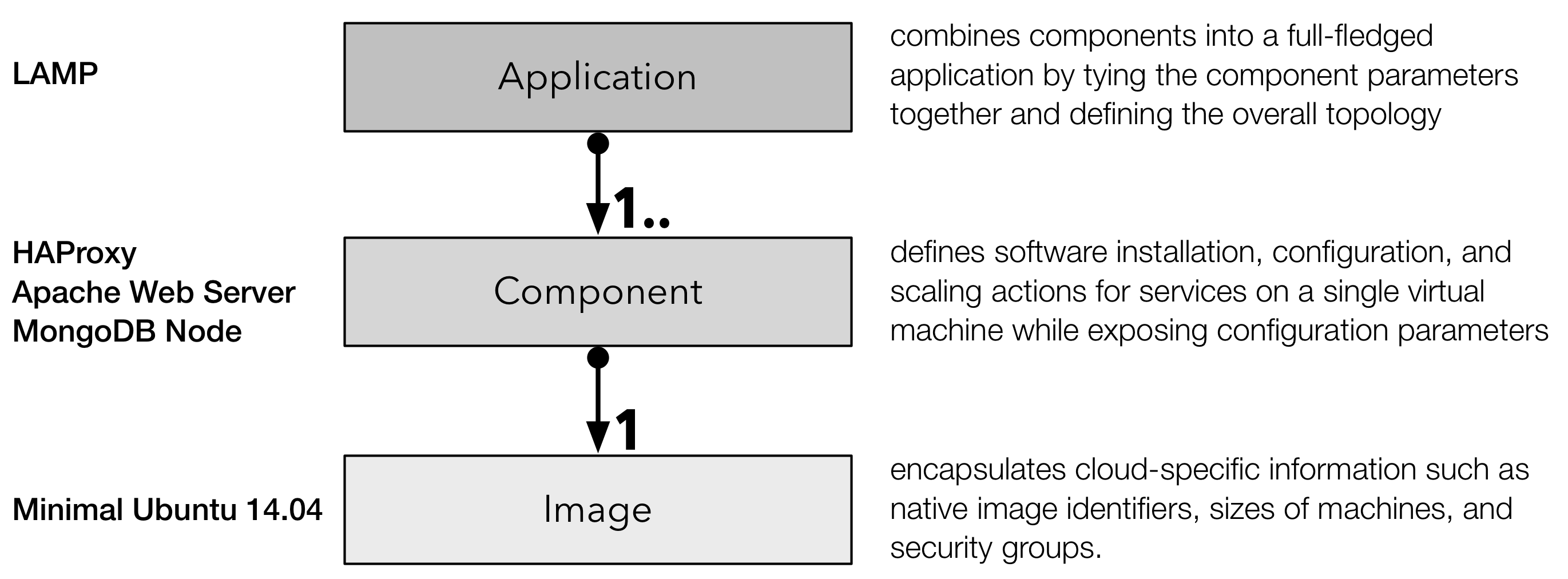Key Concepts¶
There are a few key concepts that are important to understand how the various resources are put together to define and to manage cloud applications.
Application Model¶
SlipStream uses a hierarchical description of applications to allow for portability and easy scaling of applications when they are deployed. Applications are composed of parameterized components which reference generic virtual machine images. The following diagram shows this composition.

By isolating the cloud-specific information in the images, SlipStream enhances the portability of the applications. By defining the application topology, separate from the components, it facilitates scaling the application’s functional elements and reusing components across applications.
As a concrete example consider a 3-tier web application: the LAMP (Linux, Apache, MongoDB, and PHP) stack. The components are:
- HAProxy: a single load-balancer between the client and web servers,
- Apache Web Server(s): the front-end of the service, and
- MongoDB Worker(s): providing resources for the application’s database.
Each of these are built over a minimal Ubuntu 14.04 virtual machine image that exists in the cloud infrastructure being used. The numbers of web servers and/or workers could be scaled to deal with increasing or decreasing application load.
Vocabulary¶
We have recently updated the vocabulary we use to describe the various resources within SlipStream to make the concepts more intuitive. This new vocabulary hasn’t made it through all of the code and documentation, so you may come across some of the old terms. The older terms are shown in parentheses.
- Image (base or native image)
- A virtual machine image that encapsulates cloud-specific information, such as image identifiers, sizes of a machine, and associated security groups. The referenced, native images in each cloud are expected to be effectively identical.
- Component (machine image, node)
- A single virtual machine definition that references an image and may contain scripts for the installation and configuration of additional services. These components can be parameterized and can often be run as standalone applications.
- Application (deployment)
- An application brings together one or more components into a coordinated deployment of cooperating virtual machines. This allows complex (potentially multi-cloud) applications to be defined and managed as a single entity.
- Project
- A “folder” that allows Image, Component, and Application definitions to be organized hierarchically.
- Module
- A generic name for Image, Component, Application, and Project definitions.
- Run
- A deployed (running) application or application component. A “run” encapsulates all of the runtime information of the application and acts as a resource by which the application is managed.